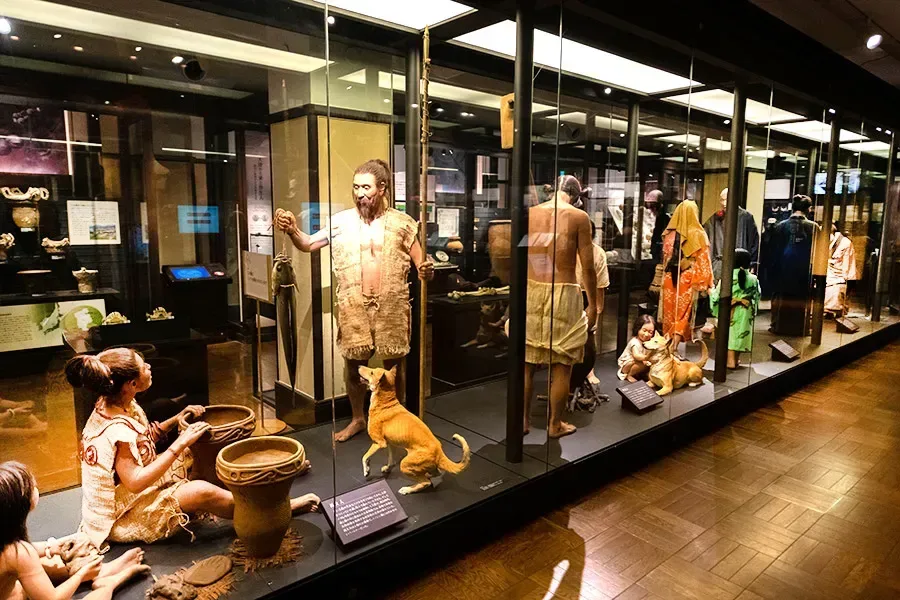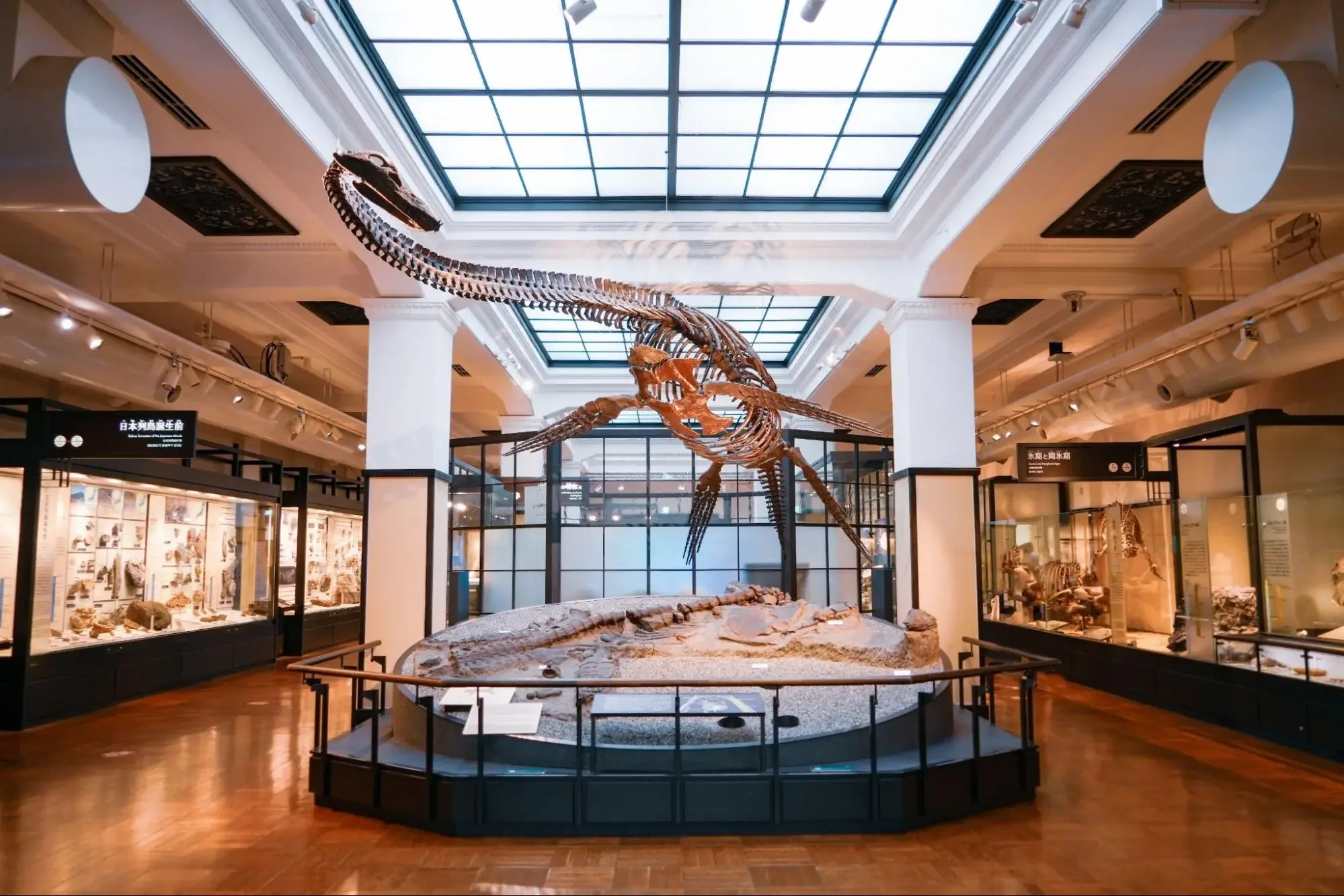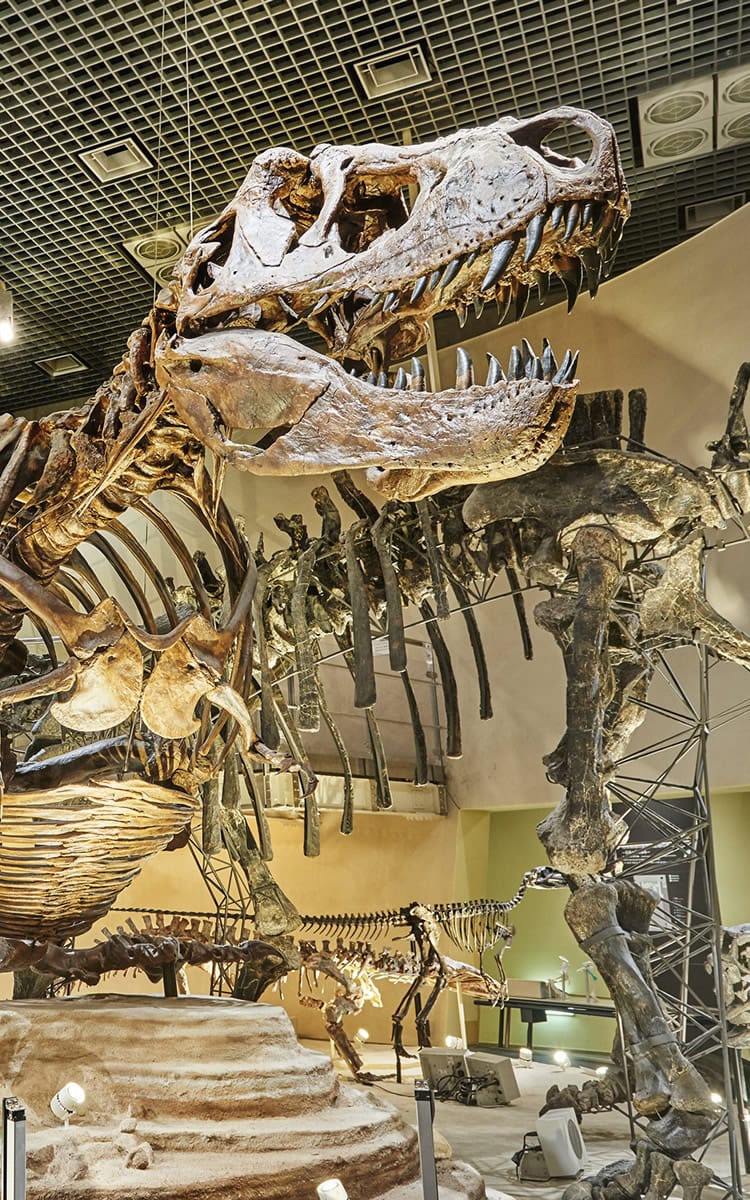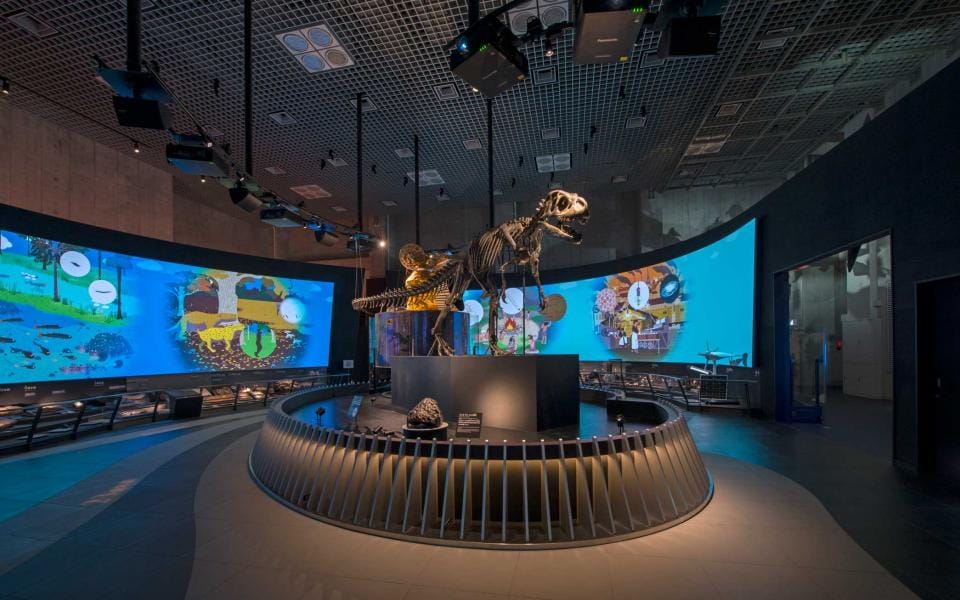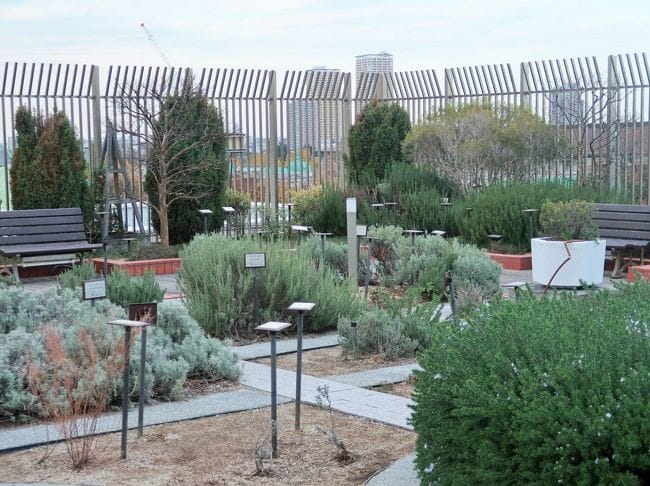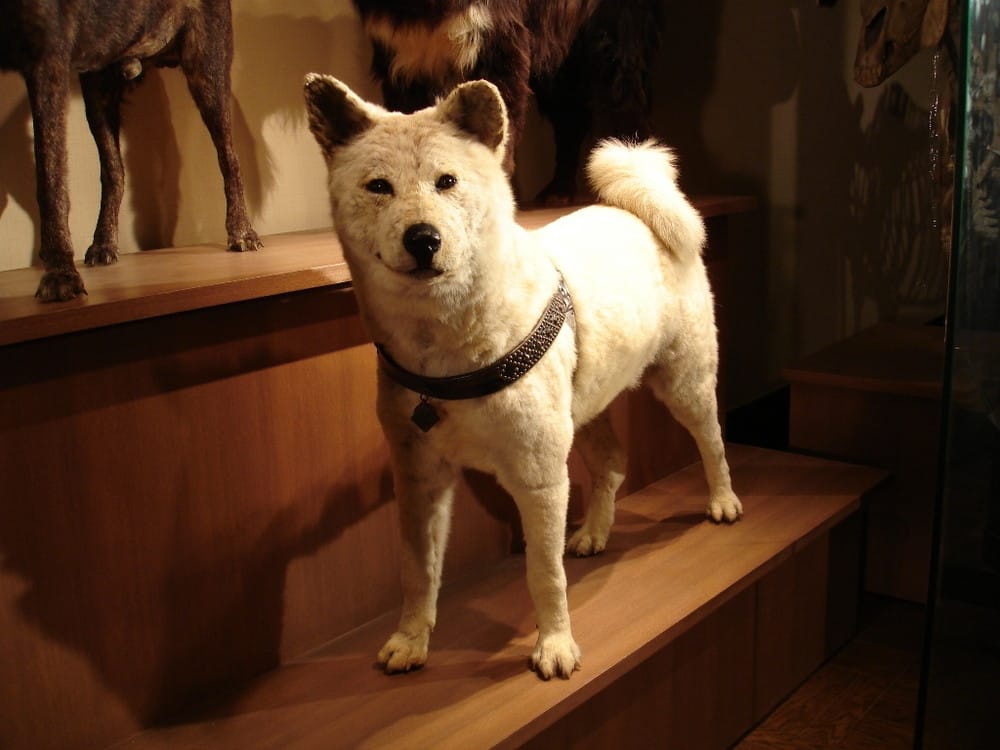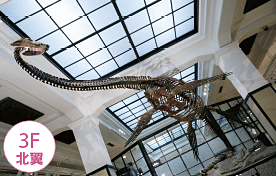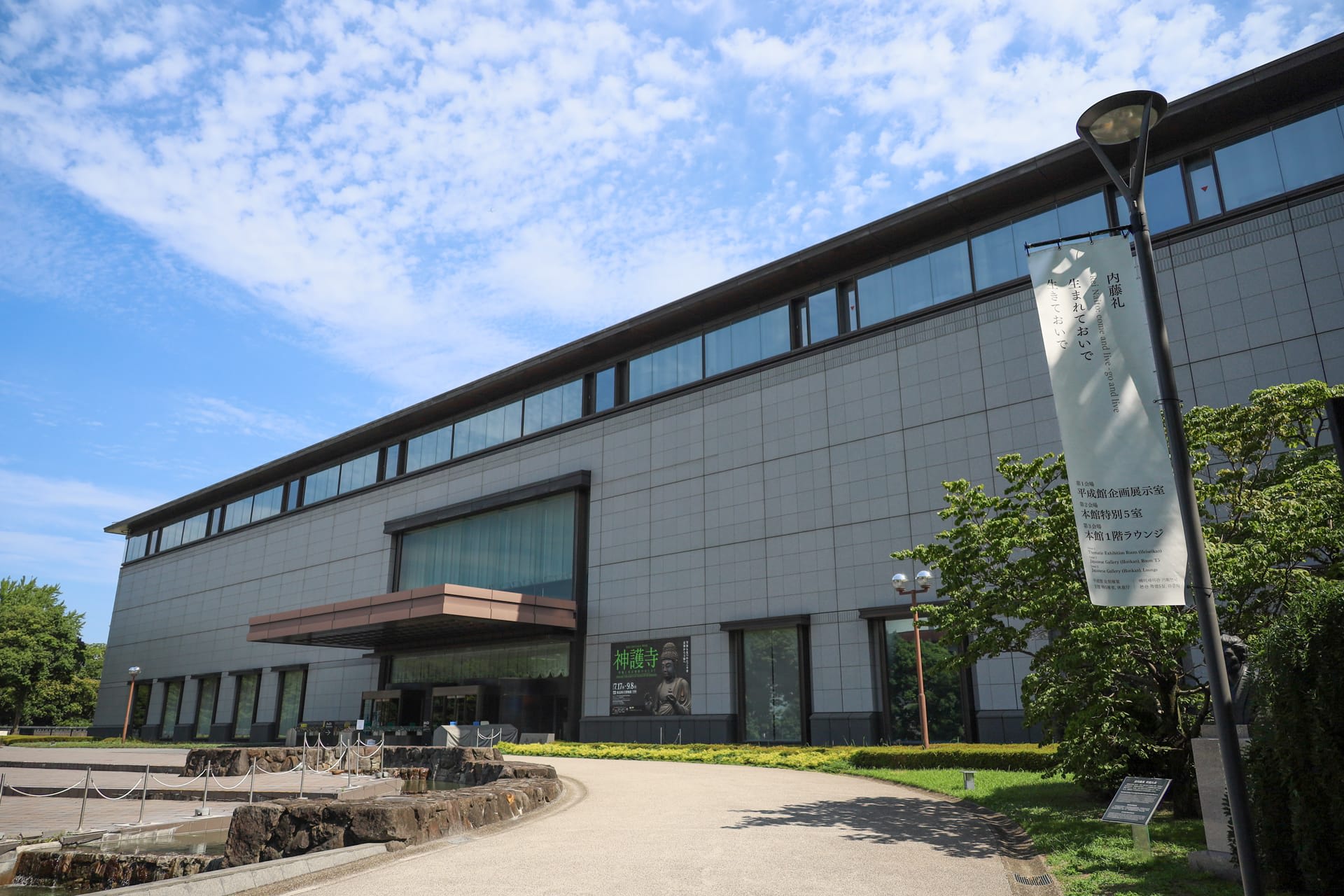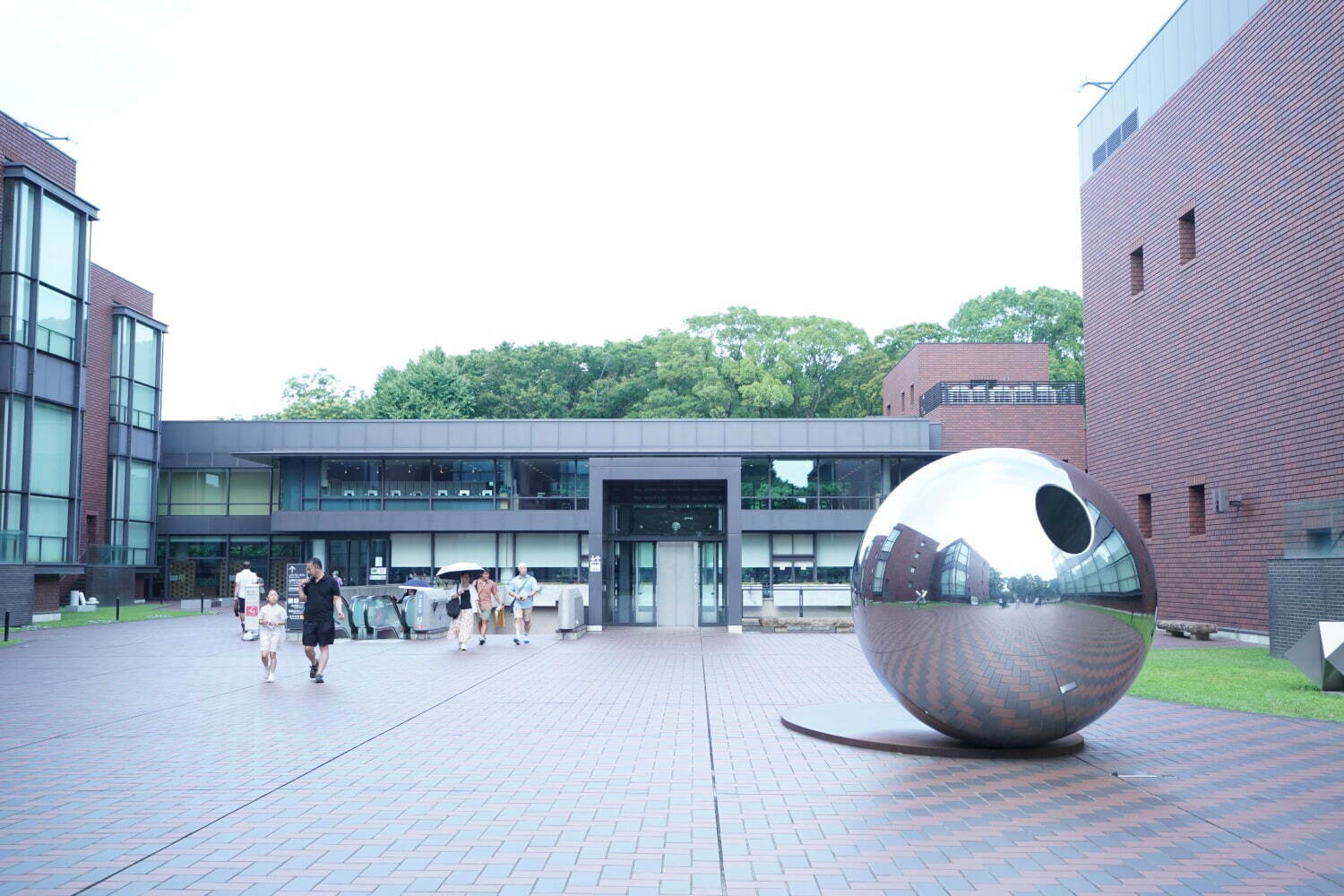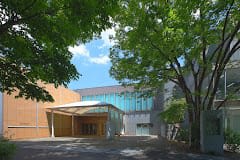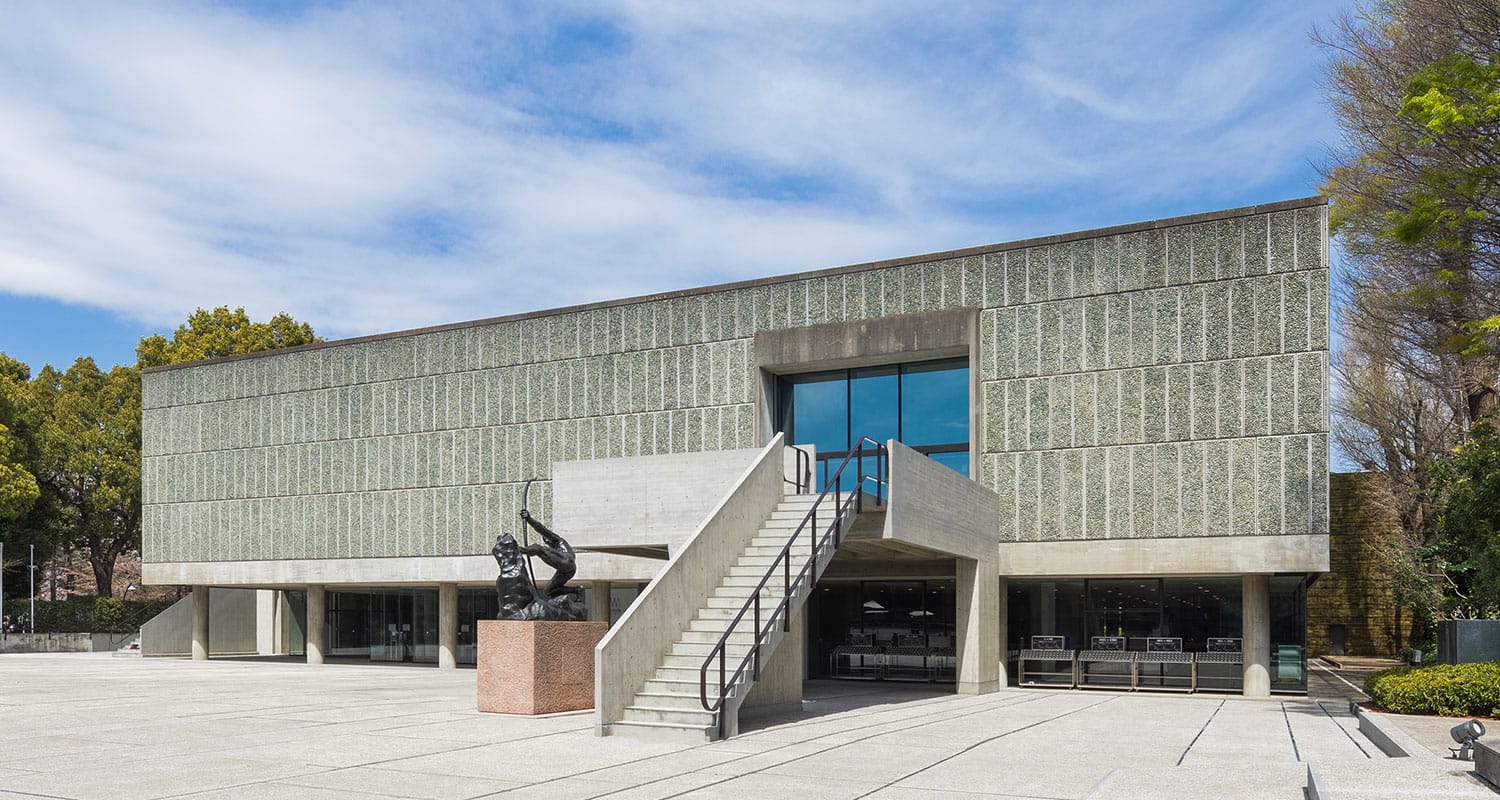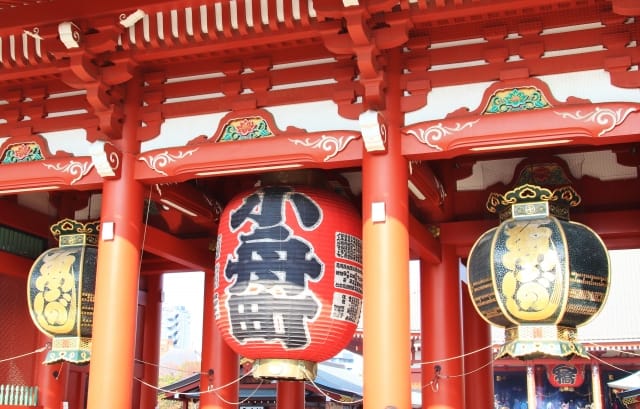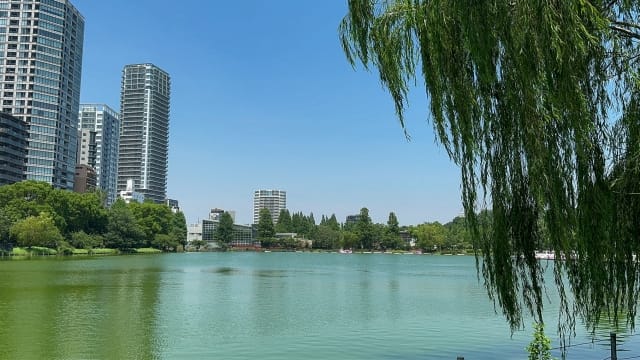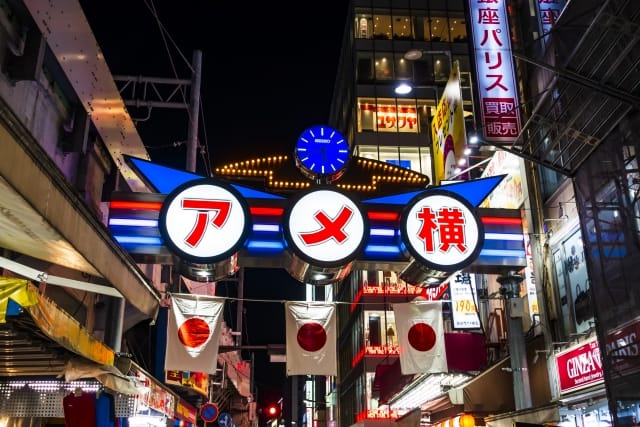National Museum of Nature and Science Guide 2025: One of the Best Attractions in Ueno Park
Ueno is a neighborhood in Taito Ward famous for its zoo, art museums, lush parks, and the drinking district under the elevated railway. With excellent access from the city center, it's a popular tourist destination. Many tourists visit Ueno along with Asakusa, and since the Shinkansen also stops here, it's a convenient area as a base for sightseeing.
While Ueno is often associated with izakayas and retro streetscapes, it also has a cultural side. Particularly around Ueno Onshi Park, there are many cultural facilities such as art museums and museums, making it an attractive place to satisfy intellectual curiosity.
In this article, we'll introduce the appeal and highlights of the National Museum of Nature and Science, one of the largest and most popular museums in the area.

The National Museum of Nature and Science: One of Japan's Oldest Museums Established in 1877
The National Museum of Nature and Science, established in 1877, is one of the oldest museums in Japan. Throughout its long history, it has collected and preserved numerous valuable scientific materials from both Japan and abroad.
Covering a wide range of topics from natural history to the history of science and technology, it plays an important role in disseminating scientific knowledge to the general public.
This museum, evolving along with history, continues to contribute to the development of science across generations. Furthermore, as the country's only comprehensive science museum specializing in natural history and the history of science and technology, it serves as a crucial hub for spreading scientific knowledge.
The Only National Comprehensive Science Museum for Natural History and History of Science and Technology
The National Museum of Nature and Science is Japan's only national comprehensive science museum in the fields of natural history and the history of science and technology.
It systematically collects scientific information and broadly communicates its appeal through exhibitions. It also plays an important role as a research institution, carrying scientific credibility and authority.
Introducing cutting-edge research results from Japan and abroad and providing scientific knowledge across a wide range of fields, it can truly be called the center of science in Japan.
The "Japanese Gallery" in Ueno Park is Designated as an Important Cultural Property
Source: TAITO City Official website
Until the current main building was constructed, the "Japanese Gallery" of the National Museum of Nature and Science was used as the main building.
Completed in 1931, this Neo-Renaissance style building is characterized by its solid construction, with beautiful stained glass in the central hall. Interestingly, when viewed from above, the building is shaped like an airplane.
The Japanese Gallery itself is a precious historical building carefully protected by the state. In addition to the exhibits, please pay attention to this magnificent architectural beauty.
Research Facilities in Tsukuba and Shirokanedai
The National Museum of Nature and Science also has research facilities in Shirokanedai, Tokyo, and Tsukuba, Ibaraki Prefecture.
These facilities conduct daily research and contribute to the expansion of scientific knowledge. They play an important role as the foundation of scientific information reflected in museum exhibitions.
Highlights of the National Museum of Nature and Science! Three Points to Focus on When Visiting
The "Japanese Gallery" Where You Can Learn About the Formation and Transition of the Japanese Archipelago While Having Fun
In the "Japanese Gallery," you can learn about the formation of the Japanese archipelago and its geological transitions in an enjoyable way.
Through exhibits and models, you can visually understand how the Japanese archipelago separated from the continent and what kind of creatures lived during that time.
On the South Side of the 2nd Floor, Taxidermy of Japanese Archipelago Creatures is Displayed
Source: TAITO City Official website
The exhibition on the south side of the 2nd floor displays many taxidermy specimens of creatures from the Japanese archipelago, allowing you to learn about their evolutionary process.
In the midst of ice ages and interglacial periods that have been repeated for about 1.7 million years, animals that came to the Japanese archipelago underwent unique evolution. Especially, creatures that crossed from the continent during ice ages when land bridges formed adapted to the complex natural environment of the Japanese archipelago, survived, and formed a unique ecosystem during interglacial periods.
The realistic taxidermy displays allow you to experience the traces of biological evolution. This exhibition room is recommended for those interested in biology and evolution theory.
On the North Side of the 2nd Floor, You Can Enjoy the History of Japanese Life from Ancient Times
Source: Let's Enjoy Tokyo
The exhibition on the north side of the 2nd floor allows you to learn about the history of Japanese life from ancient times to the present.
About 40,000 years ago, ancestors who moved from East Asia adapted to Japan's natural environment and utilized the blessings of rich forests and seas to live. The exhibition shows the ingenuity of Japanese people who developed along with nature, including the invention of pottery and tools, and the development of agricultural techniques.
Through dolls recreating life scenes, you can feel the wisdom and ingenuity of ancient Japanese people. If you're interested in Japanese history and culture, be sure to visit.
On the North Side of the 3rd Floor, You Can Learn About the History of Japan Being Separated from the Continent and Forming an Archipelago While Having Fun
Source: Meiji Note
The exhibition on the north side of the 3rd floor allows you to learn about the dynamic geological history of the Japanese archipelago's formation as it separated from the continent.
The Japanese archipelago has an unusually complex geological background even by global standards. Within this, numerous plants and animals have repeatedly flourished and gone extinct. From traces such as fossils engraved in strata, you can understand how Japan came to its present form.
This exhibition is recommended for those interested in fossils and geology, or those who want to know about natural transitions.
The "Global Gallery" Where Parents and Children Can Learn About the Earth Together While Having Fun
Source: Official website
In the "Global Gallery," parents and children can learn about the history of life on Earth and human evolution in an enjoyable way. The exhibition theme is "The History of Life on Earth and Humanity." It explains the birth of the Earth, the evolution of life, and the emergence of humanity in an easy-to-understand manner.
The gallery spans six floors from the 3rd basement to the 3rd floor, with a rich array of models, videos, and interactive exhibits. Therefore, even small children can enjoy it without getting bored. It's an excellent spot for parents and children to cultivate an interest in nature and science together.
The Area Renovated in 2015 is Particularly Popular!
Source: Yamagiwa
In 2015, about one-third of the Global Gallery underwent a major renovation, introducing exhibits using the latest technology and interactive displays.
Efforts have been made for visitors to feel science more closely and learn while having fun.
Particularly, the giant dinosaur exhibit has become even more impressive, with the attractive point being that it can be observed from various angles. It's an excellent place to cultivate interest in natural science and receives high praise from a wide range of age groups.
The SkyDeck on the Roof of the Global Gallery and the Museum Shop, Perfect for Taking a Break
On the roof of the Global Gallery, there's a Sky Deck where you can take a relaxing break while enjoying the view.
Also, the museum shop inside the building offers original products featuring motifs from the National Museum of Nature and Science exhibits, fossil and mineral specimens, experiment kits, and other souvenirs perfect for gifts.
The Sky Deck Features a Herb Garden Composed of Diverse Plants
Source: 4 Travel
The Sky Deck of the Global Gallery is a popular spot for many visitors as a relaxing break space.
With wooden deck flooring, benches placed here and there, and a roof and mist shower, it's comfortable even in summer. Particularly attractive is the herb garden planted with about 150 species of medicinal, edible, and aromatic herbs.
This rooftop garden is a special space where you can refresh while surrounded by the scent of plants. It's ideal as a place to take a break after walking around and seeing the museum exhibits.
At the Museum Shop, You Can Purchase Hachiko Goods and Stuffed Animals
Source: Official website
At the museum shop, a popular Hachiko, the faithful dog stuffed toy, is sold. Hachiko is a famous dog known for waiting for his deceased owner at Shibuya station for about 10 years. Hachiko's taxidermy is on display at the National Museum of Nature and Science, and this stuffed toy is modeled after it.
The realistic left-curling tail and the harness with the name "Hachi-go" are reproduced, making it a perfect souvenir from a trip to Japan.
In addition, there are also cute stuffed toys modeled after Futabasuzukiryu, Lucy the Australopithecus, and creatures that appeared in special exhibitions.
Three Globally Valuable Exhibits You Must See When Visiting the National Museum of Nature and Science
Taxidermy of Hachiko the Faithful Dog
Source: Geidai Art Plaza
The taxidermy of Hachiko the faithful dog is the actual stuffed specimen of "Hachi," Japan's most famous dog. Hachiko continued to wait for his owner at Shibuya station every day even after the owner's death, and his loyalty moved people throughout Japan. This story has been made into movies and is widely known around the world.
This taxidermy was created to pass on Hachiko's faithful figure and touching story to future generations. When you actually see Hachiko's figure, you'll be moved again by the fact that he really existed.
It's an exhibit that offers a precious experience of seeing up close a famous dog known to many people.
Restored Skeletons of Ancient Creatures Such as Tyrannosaurus and Mammoth
Source: Official website
At the National Museum of Nature and Science, full-body restored skeletons of ancient creatures such as Tyrannosaurus and Mammoth are on display.
Tyrannosaurus is known as one of the largest carnivorous dinosaurs in history, while Mammoth is known as a giant mammal that lived during the ice age.
The highlight of this exhibit is that you can observe the giant skeletons up close, allowing you to experience their body structure and impact. Moreover, these skeletons are not mere replicas; some actual fossils are used, making them extremely valuable.
By comparing with imaginary illustrations of their living state, you can gain a deeper understanding of their appearance and ecology at that time.
Restored Skeletons of Futabasuzukiryu (Also Known as Plesiosaur) and Ammonite
Source: Official website
The restored skeletons of Futabasuzukiryu and Ammonite are essential exhibits for understanding the evolution and ecology of ancient marine creatures.
Futabasuzukiryu is a dinosaur discovered in Japan. Its figure, reaching about 7 meters in total length, gives a sense of impact and historical value. Ammonite is a type of marine creature that went extinct hundreds of millions of years ago, characterized by its spiral shell.
These exhibits are valuable materials for learning about the biodiversity of ancient oceans, and because actual fossils are also used, you can enjoy realistic restorations. You can immerse yourself in the grand history of the sea and experience being drawn into the ancient world.
Access and Basic Information for the National Museum of Nature and Science
Address: 7-20 Ueno Park, Taito-ku, Tokyo
Access: 5 minutes walk from JR "Ueno Station" Park Exit
10 minutes walk from Tokyo Metro Ginza Line / Hibiya Line "Ueno Station" Exit 7
10 minutes walk from Keisei Line "Keisei Ueno Station" Main Exit
Opening Hours: 9:00 - 17:00 (Last entry at 16:30)
Closed: Every Monday (If Monday is a holiday, then Tuesday)
Phone Number: 050-5541-8600
Official Website: https://www.kahaku.go.jp/
There Are Many Other Attractive Museums in Ueno Park Besides the National Museum of Nature and Science
TOKYO NATIONAL MUSEUM
Source: Official website
The Tokyo National Museum is dedicated to preserving Japan's cultural heritage and passing it on to future generations. As Japan's oldest museum, it houses over 120,000 archaeological artifacts and works of art.
The museum boasts a vast collection of precious exhibits that tell the history of Japan and the East, leaving visitors in awe of its scale.
When I visited, what left a lasting impression on me was the Heiseikan Gallery, where you can relive Japan's history. It displays weapons made about 40,000 years ago and pottery from over 10,000 years ago, making it feel as though the lives of people from that time are unfolding before your eyes.
The museum has six exhibition halls, so it's difficult to see everything in one day. It’s best to make a list of what you want to see in advance for a more efficient visit. If you’re a fan of Japanese history and art, this is a must-visit destination.
Address: 13-9 Ueno Park, Taito-ku, Tokyo
Hours: 9:30 AM to 5:00 PM (Fridays and Saturdays until 8:00 PM)
Closed: Mondays (Open on holidays or public holidays, closed the following weekday)
Phone: 050-5541-8600
Official website: https://www.tnm.jp/
Tokyo Metropolitan Art Museum
Source: FASHION PRESS
The Tokyo Metropolitan Art Museum, Japan's first public art museum, is themed as the "Gateway to Art." It regularly holds special exhibitions featuring masterpieces from Japan and abroad, as well as creative, themed exhibitions, offering a wide range of art genres to enjoy.
The museum's modern design, created by Japan's leading modernist architect, Kunio Mayekawa, enhances its appeal even further.
With sculptures scattered throughout the grounds, it's also fun to stroll around while searching for your favorite art pieces.
I particularly enjoy relaxing at the casual restaurant attached to the museum, with its open and spacious atmosphere. The glass walls offer a view of the greenery and walking paths, making it a perfect spot to unwind.
This is a recommended place for both art enthusiasts and those looking to experience the unique atmosphere of a museum.
Address: 8-36 Ueno Park, Taito-ku, Tokyo
Hours: 9:30 AM to 5:30 PM
Closed: First and third Mondays (Closed the next day if it falls on a holiday)
Phone: 03-3823-6921
Official website:https://www.tobikan.jp/
Ueno Royal Museum
Source: Google Maps
The Ueno Royal Museum is the only private museum located in Ueno Onshi Park. It showcases a variety of art through unique exhibitions, featuring a blend of traditional and contemporary Japanese culture, such as Ukiyo-e and manga exhibitions. The museum offers an enjoyable experience across a wide range of artistic genres.
The museum shop offers a variety of original goods, with unique and creative items. The stationery, in particular, stands out for its design and is highly recommended for those seeking distinctive Japanese souvenirs.
My personal recommendation is to visit the rooftop after viewing the exhibitions. It offers a panoramic view of Ueno's forest, making it the perfect spot to refresh and escape the hustle of the city, surrounded by both art and nature.
- Address: 1-2 Ueno Park, Taito City, Tokyo
- Hours: 10:00 AM - 5:00 PM
- Closed: Irregular
- Phone: 03-3833-4191
- Official Website:https://www.ueno-mori.org
The National Museum of Western Art
Source: Official website
The National Museum of Western Art is the only museum in Japan specializing in Western art. Visitors can enjoy paintings and sculptures by famous artists such as Van Gogh, Monet, and Rodin, who were active from the 19th to early 20th centuries.
In addition to its exhibitions, the museum building itself, designed by renowned modernist architect Le Corbusier, is highly valued for its architectural significance.
The architecture tours at the museum are easy to follow, even for someone like me with little knowledge of architecture. The staff's explanations made it possible to appreciate the building as a work of art in itself.
At the National Museum of Western Art, be sure to enjoy both the art and the architecture.
- Address: 7-7 Ueno Park, Taito City, Tokyo
- Hours: 9:30 AM - 5:30 PM (Fridays and Saturdays: 9:30 AM - 8:00 PM)
- Closed: Every Monday
- Phone: 050-5541-8600
- Official Website:https://www.nmwa.go.jp/jp/index.html
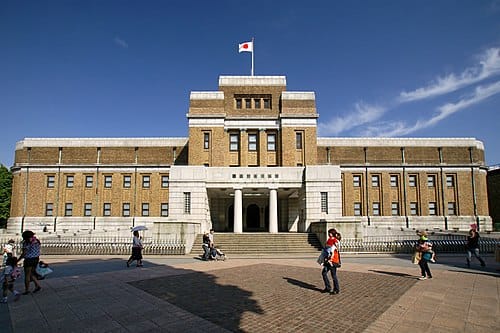
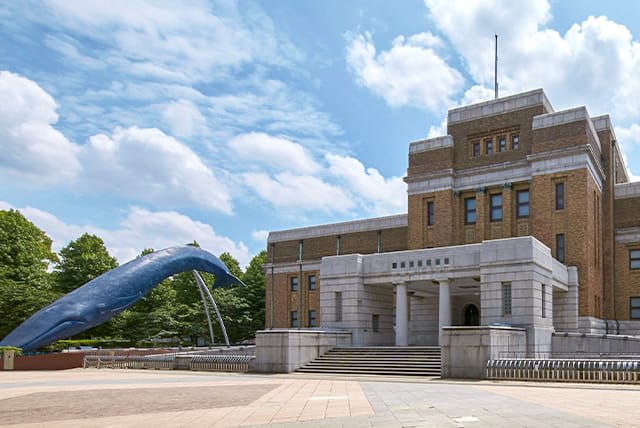
![[1200_1200]_20240515090803_地球館大地を駆ける生命2 (1).jpg](https://res-2.cloudinary.com/dbm1qiew0/image/upload/q_auto/v1/blog-images/-1200_1200-_20240515090803_-----------2--1-.jpg)
